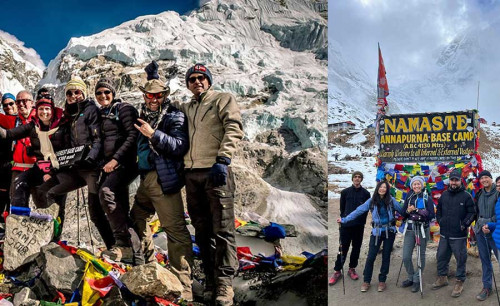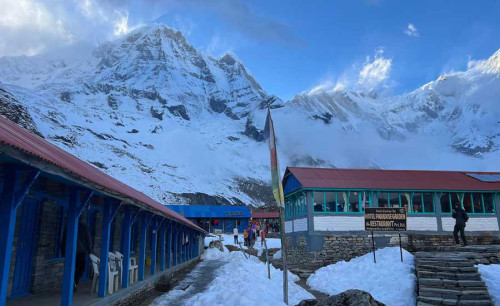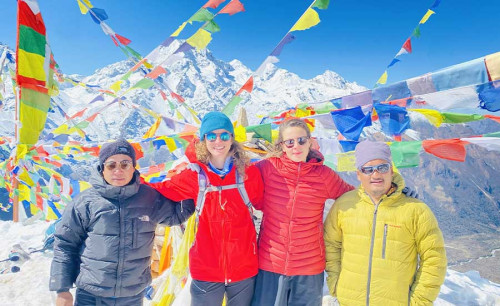Know About Everest Base Camp Trek Difficulty
Published On : 30th Mar, 2025 By Himalayan Dream Team

Comprehensive Guide to Everest Base Camp Trek Difficulty
Trekking to Everest Base Camp can be an once in a lifetime experience venturing out to the Himalayas of Nepal to see Everest and other towering mountaintops. Everest Base Camp Trek provides both spectacular views of nature while experiencing the wonderful Sherpa heritages by trekking through scenic villages, rhododendron forests, and sacred monasteries. It begins in Lukla (2,860m) and heads through Namche Bazaar (3,440m) and Tengboche (3,860m) until reaching Everest Base camp lying at 5,364 meters and takes around 12 to 18 days on average. Stipulations include great mental resolve and a fit physique.
Even though it sounds straightforward, the high altitude adds difficulty to the journey which should not be underestimated. With oxygen levels being scarce, common symptoms like headaches and fatigue are typically experienced. With the right level of acclimatization and prior preparations, you will be able to ensure successful completions. The Himalayan Dream Team guarantees trekkers experience confidence by providing tips and expert guidance for trekkers achieving the Everest Base Camp. Check out our blog for practical advice to help with the trek through the majestic Himalayas.
Key Takeaway: The trek is rated as moderate to strenuous, hence it can be undertaken by trekkers with a good level of physical fitness and mental strength.
What Are The Most Difficult Aspects Of The Everest Base Camp Trek?

In terms of difficult yet rewarding adventures, the Everest Base Camp has the most iconic reputation, but it is not without challenges. The combination of altitude, changing landscape, and weather patterns makes this trek an Everest; both physically and mentally challenging. Expect health risks if safety concerns are not deeply understood and analyzed. Himalayan Dream Team pays utmost attention to your safety while enjoying this trek, because we want you to enjoy the sights.
Altitude Sickness: The Primary Issue
Something most trekkers and climbers complain about is the altitude sickness during the Everest Base Camp trek. Also known as Acute Mountain Sickness (AMS), if left unchecked can ruin the experience for everyone. Some of the many symptoms trekkers will experience include headaches, being out of breath, dizziness, fatigue, and vomiting. During these scenarios, there is a probability of escalating towards danger with both life threatening cases of High Altitude Pulmonary Edema (HAPE) and High Altitude Cerebral Edema (HACE). These symptoms tend to appear after crossing 3000 meters above sea level, where the oxygen level becomes depleted. In High AMS, pacing and hydration along with days of proper acclimatization becomes crucial to ensure the safety of the climber.
Trek Distance and Duration
Hiking to Everest Base Camp is approximately 130 kilometers in total, and ascends and descends over the course of the trek. Each day of hiking takes about five to eight hours, starting from Lukla (2,860 m). Key stops include: Phakding, Namche Bazaar, Tengboche, Dingboche, Lobuche, Gorak Shep, and Everest Base Camp (5,364 m). For the best view of Mount Everest, many trekkers will continue up to Kala Patthar (5,545 m). Depending on the plan, this trek takes around 12 to 14 days. However, the remaining portion of the trek is much faster.
Trekking Route Details: Everest Base Camp
| Trekking Route | Distance | Duration | Altitude |
|---|---|---|---|
| Lukla to Phakding | 6.2 Kilometers | 3 to 4 Hours | 2,600 Meters |
| Phakding to Namche Bazaar | 7.4 Kilometers | 5 to 6 Hours | 3,450 Meters |
| Namche to Sagarmatha Museum | 1.1 Kilometers | 1 to 2 Hours | 3,550 Meters |
| Namche to Everest View Hotel | 1.5 Kilometers | 3 to 4 Hours | 3,962 Meters |
| Namche to Tengboche | 9.2 Kilometers | 5 to 6 Hours | 3,870 Meters |
| Tengboche to Dingboche | 9.1 Kilometers | 4 to 5 Hours | 4,360 Meters |
| Dingboche to Lobuche | 7.9 Kilometers | 4 to 5 Hours | 4,940 Meters |
| Lobuche to Gorak Shep | 4.1 Kilometers | 3 to 4 Hours | 5,140 Meters |
| Gorak Shep to Everest Base Camp | 3.5 Kilometers | 3 to 4 Hours | 5,364 Meters |
| Gorak Shep to Kala Patthar | 2.0 Kilometers | 3 to 4 Hours | 5,545 Meters |
| Gorak Shep to Pangboche | 14.6 Kilometers | 6 to 7 Hours | 3,930 Meters |
| Pangboche to Monjo | 11.3 Kilometers | 7 to 8 Hours | 2,835 Meters |
| Monjo to Lukla | 9.5 Kilometers | 4 to 5 Hours | 2,840 Meters |
Trail Conditions and Terrain
The trek to Everest Base Camp is designed for all skill levels and the landscape includes: the blooming rhododendron forests, mountainous glacial moranines, and rocky river bodies. Other aspects that contribute to the difficulty of the trek are: steep elevation gain/loss, loose or rock covered paths, suspension bridges, or no clear path at all. Hikers can expect wonderfully wild and extremely technical paths. Alongside breathtaking sights, you will also witness Sherpa culture, monasteries, and other alpine villages.
The Weather in The Everest Region:
Weather is one of the most important factors when considering the pace that is set for the Everest Base Camp trek.1181 km. Between December and February, snowfall combined with sub-zero temperatures freezes over the trail, creating dangerously cold conditions. Spring (March to May) is known for having warmer days and the blooming rhododendrons, which make it a popular season for trekking. The Monsoon season which lasts from June to August is advised against due to slippery trails coupled with poor visibility. During autumn (September to November), the skies are clear, the temperatures are moderate, and the view of the mountains is the best, which makes this time the most advantageous for trekking.
Himalayan Dream Team aims to make the Everest Base Camp Trek as enjoyable as possible, and that is why we offer custom itineraries, altitude safety tips, and follow-along videos. We ensure that every journey made with us is unforgettable. Be sure to check out the blogs we offer, as they are filled with tips and preparation guides designed to help you conquer the Himilayas.
Everest Base Camp Trek Short Itinerary
| Day | Details | Food | Accommodation | Highest Altitude | Walking Hours |
|---|---|---|---|---|---|
| Day 01 | Arrival in Kathmandu | Dinner | Hotel | 1335 m | |
| Day 02 | Sightseeing in Kathmandu and trekking preparation | Breakfast | Hotel | 1335 m | |
| Day 03 | Fly/Drive to Lukla & Trek to Phakding | Breakfast-Lunch-Dinner | Lodge | 2600 m | 4/5 hrs |
| Day 04 | Phakding to Namche Bazaar | Breakfast-Lunch-Dinner | Lodge | 3450 m | 5/6 hrs |
| Day 05 | Acclimatization day in Namche Bazaar | Breakfast-Lunch-Dinner | Lodge | 3450 m | 6/7 hrs |
| Day 06 | Trek to Tengboche and visit Monastery | Breakfast-Lunch-Dinner | Lodge | 3870 m | 5/6 hrs |
| Day 07 | Tengboche to Dingboche | Breakfast-Lunch-Dinner | Lodge | 4360 m | 6/7 hrs |
| Day 08 | Acclimatization in Dingboche | Breakfast-Lunch-Dinner | Lodge | 4360 m | |
| Day 09 | Dingboche to Lobuche | Breakfast-Lunch-Dinner | Lodge | 4940 m | 5/6 hrs |
| Day 10 | Lobuche to Gorak Shep & EBC visit | Breakfast-Lunch-Dinner | Lodge | 5364 m | 6/7 hrs |
| Day 11 | Kala Patthar to Pheriche | Breakfast-Lunch-Dinner | Lodge | 5545 m | 6/7 hrs |
| Day 12 | Pheriche to Namche Bazaar | Breakfast-Lunch-Dinner | Lodge | 3450 m | 5/6 hrs |
| Day 13 | Namche Bazaar to Lukla | Breakfast-Lunch-Dinner | Lodge | 2800 m | 6/7 hrs |
| Day 14 | Lukla to Kathmandu | Breakfast | Hotel | 1335 m | |
| Day 15 | Free day in Kathmandu | Breakfast | Hotel | 1335 m | |
| Day 16 | Transfer to International Airport |
Understanding the Physical Demands of Everest Base Camp Trek

Each day, walking distances vary from 5-15 km, sometimes employing flat walking and steep walking, and frequently utilizing a rugged path. Therefore, a moderate to low walking speed for 5-7 hours on a daily basis is prudent to fast trekkers.
Training Recmommendation:
- Leg and core body strength training is recommended for preparatory purposes.
- In addition to enduring aerobic activities, general fitness can be improved with hiking, jogging, and stair climbing.
- To replicate real-life scenarios, perform simulated trekking with a weighted backpack.
How to Prepare for the High Altitude of Everest Base Camp Trek
Among the challenging features accompanying one on the EBC trek is altitude. As one goes up, the oxygen level goes down. Good acclimatization is needed to prevent altitude sickness-a natural process that happens above 3,000 meters above sea level.
Acclimatization Tips:
- Schedule rest days in Namche Bazaar and Dingboche.
- Ascend gradually in order to let your body acclimatize.
- Consume at least 3-4 liters of water every day to keep your body hydrated.
Altitude Sickness During Everest Base Camp Trek
Altitude sickness or Acute Mountain Sickness is one common issue seen among trekkers. Headaches, nausea, dizzy headedness, and fatigued body are common symptoms.
How to Avoid
- Take altitude sickness medication like Diamox if prescribed by your doctor.
- Avoid intake of alcohol and smoking as this can make the high altitude sickness worse.
- Immediately descend to a lower altitude if the symptoms worsen.
Essential Equipment for Everest Base Camp Trek
Packing the right gear will go a long way in comfort and safety. The weather conditions can change suddenly, and high-quality, weather-resistant clothing will come in handy.
Gear List:
- Trekking boots, waterproof, and well broken into
- Insulating layers, such as thermal wear and down jacket
- Trekking poles for stability on uneven ground
- High-quality sleeping bag with sub-zero temperature rating
- Daypack in which one can carry water, snacks, and first aid
Acclimatization's Role in Reducing the Difficulty Level of the Everest Base Camp Trek

The main key to a successful trek is proper acclimatization. Adding rest days in strategic locations helps your body get used to the low level of oxygen.
Popular Acclimatization Stops:
- Namche Bazaar: Two overnights are spent here for familiarization with the local markets and viewing the panoramic view of Everest.
- Dingboche: Take a day hike to the top of Nangkartshang Peak for better acclimatization.
Safety on the Everest Base Camp Trek
Safety is important, especially when trekking in high-altitude regions with very quick weather and health changes.
Safety Tips:
- Never trek alone; use a buddy system, or employ a guide if you're local.
- Carry a first-aid kit with basic supplies, such as bandages, antiseptics, and altitude medication.
- Be aware of the weather and change your schedule accordingly, if the weather demands so.
Best Seasons to Overcome Everest Base Camp Trek Challenges
The best time for trekking is in pre-monsoon and post-monsoon seasons. That is in March up to May and September up to November. During these periods, the weather has a quite stable condition, with clear skies allowing a great view of the Himalayas.
Seasonal Consideration:
- Spring: From March to May, temperatures are pretty warm, with rhododendon forests in full bloom.
- Autumn (September-November): Crisp, clear weather with fewer crowds.
How Weather Affects the Everest Base Camp Trek Difficulty
The weather in the Himalayas can be unpredictable, with temperatures dropping below freezing at night, especially at higher elevations. Sudden snowstorms or rain showers can occur, adding to the trek’s difficulty.
Weather Preparation:
- Layer your clothing to adjust to changing temperatures.
- Carry waterproof gear such as rain jackets and pants.
- Protect yourself from the sun at high altitudes with sunscreen, sunglasses, and a hat.
Everest Base Camp Trek Packing List to Go Comfortable
Packing wisely can make or break your trek. Overpacking can make the hike exhausting, while underpacking might leave you unprepared for harsh conditions.
Essential Items:
- Extra warm layers of clothes
- Water bottle with water purification tablets
- Energy bars and snacks to keep you going
- Headlamp, extra batteries
- Toilet paper and hand sanitizer
How to Feel Motivated on the Everest Base Camp Trek

Long days trekking can get mentally tough, especially when the weather isn't playing the game or you're suffering from altitude.
Motivational Tips:
- Enjoy the spectacular view and different sensations throughout your journey.
- Celebrate each minor milestone-such as reaching Namche Bazaar or Tengboche.
- Be positive and remember why you took this challenge.
Mental Strength: The Everest Base Camp Trek Challenges
Mental strength is just as critical as physical fitness. This trek may be somewhat demanding, but everything changes with a good mindset.
Building on Mental Strength:
- Practice mindfulness or meditation to keep calm under stress.
- Break the trek into manageable sections rather than focusing on the end goal.
- Have positive trekking partners around you to keep going with motivation.
How to Improve Your Fitness for the Everest Base Camp Trek

Start training at least 2-3 months before your trek in order to build the needed stamina and strength.
Fitness Plan:
- Include cardio exercises such as running, swimming, or cycling.
- Add in strength training exercises to help your leg muscles.
- Do regular hikes on various terrains with a weighted pack in your backpack.
Dietary Tips to Fuel Your Everest Base Camp Trek

Correct nourishment: This constitutes a significant role in maintaining energy during the trek.
Food Recommendations:
- Protein-rich snacks: nuts, energy bars, and dried fruits
- Carbohydrate consumption, also known as dal bhat, which is a typical meal for most trekkers since it comprises a lot of nutrition
- Drink water or electrolyte drinks to stay hydrated and not face dehydration issues.
Common Mistakes to Avoid While Trekking to Everest Base Camp
Most trekkers faced certain difficulties, which normally could be avoided if one was better prepared.
Mistakes to be avoided:
- Acclimatization days: The high altitude sickness may be caused by the ignoring of rest days.
- Overpacking: In this case, too much weight will make the hikers slower and easier to get tired.
- Not drink enough water: At high attitude, the dehydration is a common problem.
Flight Delays to and from Lukla
Perhaps the most challenging features of the Everest Base Camp trek are the potential flight delays to and from Lukla Airport – the most problematic being these delays themselves. Moreover Lukla is known globally as one of the most dangerous airports. It is located in a narrow valley at 2,860 meters, sandwiched between towering Himalayan peaks. Pilots flying in and out of this region have a single runway strip to work with along with steep mountain slopes which only adds to the complications of boarding and deboarding the aircraft.
While at Himalayan Dream Team, we make it our mission to take your safety and comfort as a priority. Flying to Lukla is bound to be one of the most exhilarating experiences of your life. You do, however, need to understand that the weather in the Himalayas can be very unpredictable. For example, mountains tends to be covered in fog or cloud cover, and sometimes winds and rainfall can also cause major disruptions to flights. During the monsoon seasons (June to September) flights at Lukla can get massively delayed or be cancelled altogether due to these reasons. Even in the best recommended seasons to trek – during Spring and Fall, the weather can still be disruptive in terms of sudden changes.
If delays become prolonged, hikers run the risk of getting stuck either at Kathmandu Airport or Lukla, both of which lack sufficient amenities while waiting for suitable weather. In those scenarios, we always try to find a way for helicopter flights to or from Lukla, which take much less time and are more dependable when it comes to receiving or departing from Lukla. To others, we suggest strongly that they obtain high-level travel insurance with a scope that includes, at the very least, trip cancellation, helicopter evacuation, and air ambulance payment.
Unpredictable flights are synonymous with high altitude trekking, and as operators of Himalayan Dream Team we strive to ensure the safety and flexibility along with the best solutions so that your experience glacier trekking in the Himalayas is one that you won’t forget.
Role of Guides and Porters on EBC Trek
To trek to Everest Base Camp, well-trained guides and porters are a crucial support. Local trekking guides not only guarantee your safety as you navigate the perilous Himalayan mountains, but they also provide comprehensive knowledge about the destion’s culture, history, and Buddhism. Their expertise in altitude sickness, acclimatization schedules, and weather conditions is invaluable for a safe and successful venture.
But, porters are the true heroes of the trail. They take care of your heavy luggage- sleeping bags, duffel bags, and all other unneeded paraphernalia; this lets you fully enjoy the trek unhindered by the burden of a backpack. Their immense effort enables trekkers, regardless of skill level, to fully appreciate the Everest Base Camp experience. It is also worthwhile to seam guides and porters through responsible trekking agencies such as the Himalayan Dream Team as this facilitates local employment and contributes to eco tourism in Nepal.
Everest Base Camp Trek Difficulty - Frequently Asked Questions(FAQs)
| FAQ | Answer |
|---|---|
| 1. How difficult is the Everest Base Camp trek? | The Everest Base Camp trek is moderately difficult, requiring physical fitness and endurance, especially at high altitudes. The terrain can be challenging, with steep inclines and rocky paths. |
| 2. What makes the Everest Base Camp trek difficult? | The primary challenges include high altitude, physical exertion, unpredictable weather, and long trekking days covering uneven terrain. Proper preparation is essential. |
| 3. How do altitude changes affect the Everest Base Camp trek difficulty? | As you ascend above 3,000 meters, the air becomes thinner, making it harder to breathe. This can lead to altitude sickness, adding to the trek's difficulty. |
| 4. Can beginners handle the Everest Base Camp trek difficulty? | Yes, beginners can complete the trek with adequate preparation, fitness training, and proper acclimatization. However, it's advisable to have prior trekking experience. |
| 5. How can I prepare for the Everest Base Camp trek difficulty? | Preparation includes cardio exercises, strength training, hiking with a loaded backpack, and building endurance over 2-3 months before the trek. |
| 6. Does the Everest Base Camp trek difficulty increase during certain seasons? | Yes, the trek is more challenging in the winter (Dec-Feb) due to extreme cold and in the monsoon (June-Aug) due to slippery trails. The best seasons are spring and autumn. |
| 7. How can I manage the Everest Base Camp trek difficulty caused by altitude sickness? | Acclimatize slowly, stay hydrated, avoid alcohol, and take medication like Diamox if advised. Include rest days in your itinerary to adjust to the altitude. |
| 8. What gear is essential to reduce Everest Base Camp trek difficulty? | Essential gear includes waterproof trekking boots, a down jacket, thermal layers, trekking poles, and a high-quality sleeping bag. Packing properly can make the trek easier. |
| 9. How do unpredictable weather conditions add to the Everest Base Camp trek difficulty? | Sudden snowstorms, rain, and cold temperatures can increase the difficulty. Always be prepared with proper clothing and check weather updates regularly. |
| 10. Can the Everest Base Camp trek difficulty be reduced by hiring a guide? | Yes, hiring a guide can make the trek easier by helping with navigation, altitude management, and carrying some of your gear, making the experience less stressful. |
| 11. What physical fitness level is required to handle the Everest Base Camp trek difficulty? | A good level of fitness is needed. Focus on cardio, strength, and endurance exercises, especially for your legs and core, to handle the trek’s physical demands. |
| 12. Is it possible to complete the Everest Base Camp trek difficulty solo? | Yes, it is possible to trek solo, but it increases the difficulty as you'll need to handle navigation, altitude issues, and logistics on your own. Hiring a guide is recommended for first-timers. |
| 13. How long does it take to overcome the Everest Base Camp trek difficulty? | The trek usually takes 12-14 days, including acclimatization days. Taking it slow and allowing your body to adjust helps manage the trek's difficulty. |
| 14. How can diet impact the Everest Base Camp trek difficulty? | Eating high-energy foods like dal bhat, nuts, and energy bars can help maintain stamina. Staying hydrated is crucial for reducing fatigue and altitude sickness. |
| 15. What are the common mistakes that increase Everest Base Camp trek difficulty? | Common mistakes include not acclimatizing properly, overpacking, not drinking enough water, and underestimating the terrain. Proper planning and preparation are key. |
Recent Posts
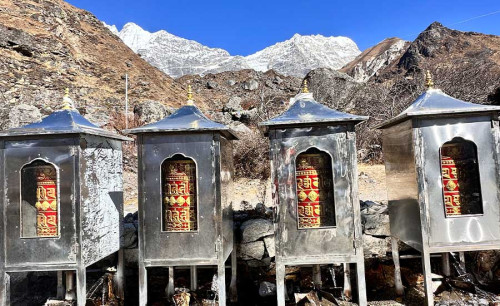
2nd Dec, 2025
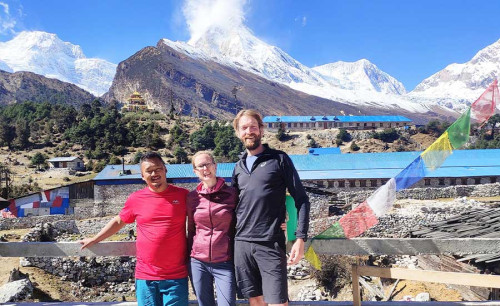
24th Nov, 2025
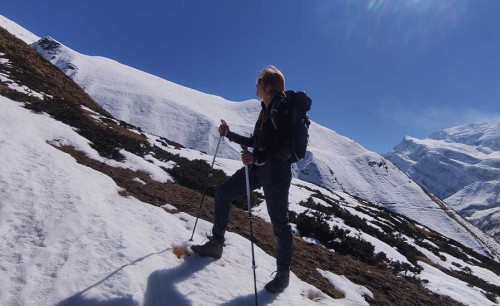
21st Nov, 2025
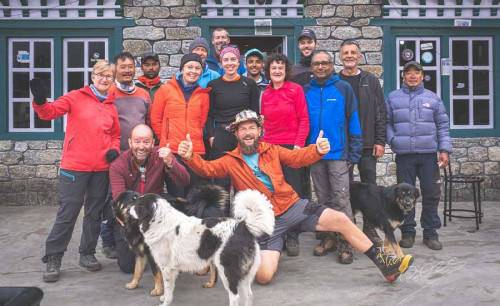
10th Nov, 2025
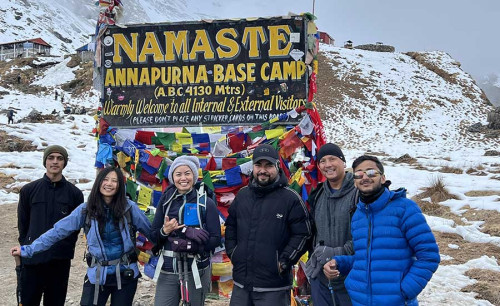
9th Nov, 2025

25th Oct, 2025

22nd Oct, 2025

17th Oct, 2025

17th Oct, 2025

13th Oct, 2025


